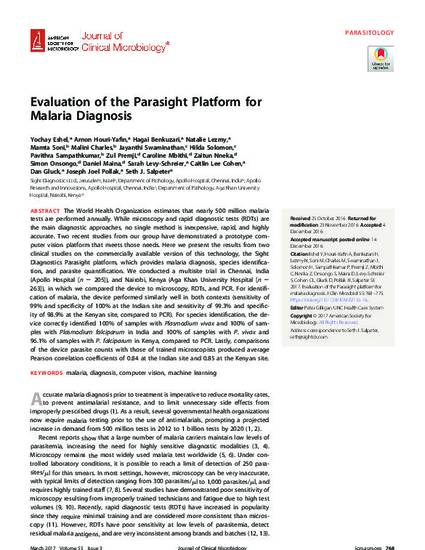
The World Health Organization estimates that nearly 500 million malaria tests are performed annually. While microscopy and rapid diagnostic tests (RDTs) are the main diagnostic approaches, no single method is inexpensive, rapid, and highly accurate. Two recent studies from our group have demonstrated a prototype computer vision platform that meets those needs. Here we present the results from two clinical studies on the commercially available version of this technology, the Sight Diagnostics Parasight platform, which provides malaria diagnosis, species identification, and parasite quantification. We conducted a multisite trial in Chennai, India (Apollo Hospital [n = 205]), and Nairobi, Kenya (Aga Khan University Hospital [n = 263]), in which we compared the device to microscopy, RDTs, and PCR. For identification of malaria, the device performed similarly well in both contexts (sensitivity of 99% and specificity of 100% at the Indian site and sensitivity of 99.3% and specificity of 98.9% at the Kenyan site, compared to PCR). For species identification, the device correctly identified 100% of samples with Plasmodium vivax and 100% of samples with Plasmodium falciparum in India and 100% of samples with P. vivax and 96.1% of samples with P. falciparum in Kenya, compared to PCR. Lastly, comparisons of the device parasite counts with those of trained microscopists produced average Pearson correlation coefficients of 0.84 at the Indian site and 0.85 at the Kenyan site.
Available at: http://works.bepress.com/zul_premji/75/
